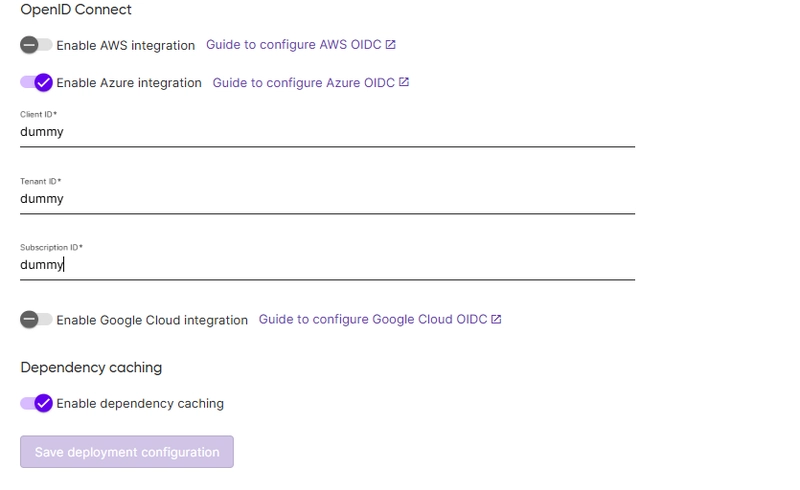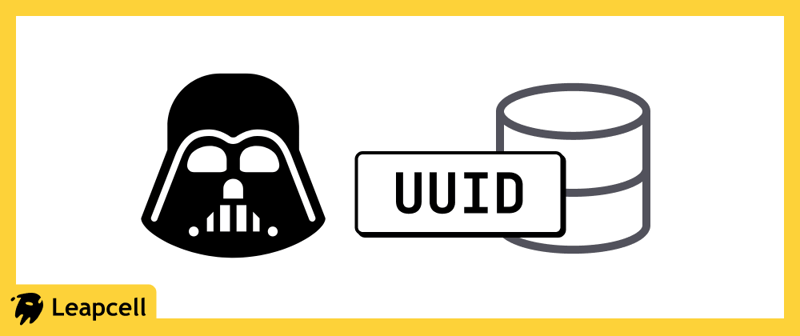Efficient Data Processing in EF Core with the `Chunk` Method in .NET 6+
Introduction When working with large datasets in Entity Framework Core, performance is always a key concern. Fetching and processing a large number of records can lead to high memory usage and performance bottlenecks. Thankfully, with .NET 6, the LINQ Chunk method simplifies batch processing by splitting collections into smaller chunks. This is particularly useful when handling large queries in EF Core, paginating data, or performing batch operations efficiently. In this article, we’ll explore how the Chunk method works and how to use it in a real-world EF Core scenario to improve performance. Understanding the Chunk Method The Chunk method is available in System.Linq and allows you to split a collection into smaller chunks of a specified size. Basic Usage of Chunk var numbers = Enumerable.Range(1, 10); var chunks = numbers.Chunk(3); foreach (var chunk in chunks) { Console.WriteLine(string.Join(", ", chunk)); } Output: 1, 2, 3 4, 5, 6 7, 8, 9 10 Each chunk contains at most three items, except the last one, which contains the remaining items. Using Chunk in EF Core for Batch Processing Scenario: Bulk Processing Users in an EF Core Database Imagine you have an application where you need to process thousands of user records in batches, instead of loading everything into memory at once. Here’s how you can efficiently process users in chunks using EF Core and the Chunk method: Step 1: Set Up the EF Core Context and Model Assume we have a simple User entity: public class User { public int Id { get; set; } public string Name { get; set; } public bool IsActive { get; set; } } And our EF Core DbContext: public class AppDbContext : DbContext { public DbSet Users { get; set; } protected override void OnConfiguring(DbContextOptionsBuilder optionsBuilder) { optionsBuilder.UseSqlServer("YourConnectionStringHere"); } } Step 2: Fetch and Process Users in Chunks Instead of loading all users into memory, we process them in batches: using var context = new AppDbContext(); const int batchSize = 100; // Fetch all active users and process them in chunks var users = context.Users.Where(u => u.IsActive).AsEnumerable(); foreach (var chunk in users.Chunk(batchSize)) { ProcessUsers(chunk); } void ProcessUsers(IEnumerable users) { foreach (var user in users) { Console.WriteLine($"Processing User: {user.Name}"); } } Why Use AsEnumerable()? EF Core does not support Chunk directly in SQL queries because it's a LINQ method operating in-memory. We use .AsEnumerable() to retrieve only the necessary records from the database and then apply Chunk in-memory. Alternative: Use Skip and Take for Large Datasets For very large datasets, fetching everything into memory using AsEnumerable() might not be ideal. Instead, use Skip and Take to fetch records directly from the database in batches: const int batchSize = 100; int processed = 0; using var context = new AppDbContext(); while (true) { var users = context.Users .Where(u => u.IsActive) .OrderBy(u => u.Id) .Skip(processed) .Take(batchSize) .ToList(); if (!users.Any()) break; ProcessUsers(users); processed += users.Count; } Why Use Skip and Take? Unlike Chunk, this method ensures that the database only retrieves a subset of records per query, reducing memory usage. Conclusion The Chunk method is a powerful tool introduced in .NET 6 that simplifies batch processing in-memory collections. When working with EF Core, you can use it for efficient processing, but for extremely large datasets, consider Skip and Take to avoid memory overload. Key Takeaways: ✅ Use Chunk when dealing with moderately sized datasets that fit in memory. ✅ Use AsEnumerable().Chunk() when working with filtered EF Core queries. ✅ Prefer Skip & Take for very large datasets to avoid memory issues. By leveraging these approaches, you can optimize performance and improve scalability in your EF Core applications. What are your thoughts on using Chunk in EF Core? Have you used it in your projects? Let’s discuss in the comments!
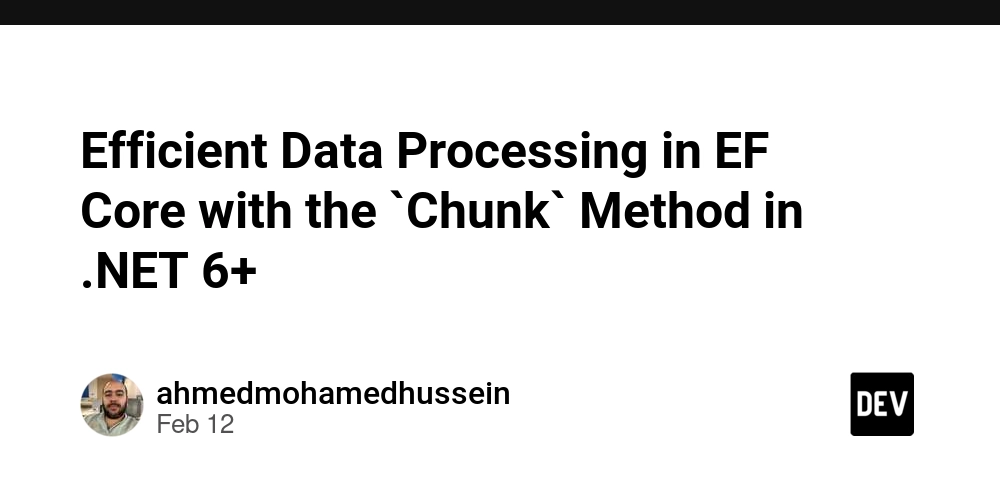
Introduction
When working with large datasets in Entity Framework Core, performance is always a key concern. Fetching and processing a large number of records can lead to high memory usage and performance bottlenecks.
Thankfully, with .NET 6, the LINQ Chunk method simplifies batch processing by splitting collections into smaller chunks. This is particularly useful when handling large queries in EF Core, paginating data, or performing batch operations efficiently.
In this article, we’ll explore how the Chunk method works and how to use it in a real-world EF Core scenario to improve performance.
Understanding the Chunk Method
The Chunk method is available in System.Linq and allows you to split a collection into smaller chunks of a specified size.
Basic Usage of Chunk
var numbers = Enumerable.Range(1, 10);
var chunks = numbers.Chunk(3);
foreach (var chunk in chunks)
{
Console.WriteLine(string.Join(", ", chunk));
}
Output:
1, 2, 3
4, 5, 6
7, 8, 9
10
Each chunk contains at most three items, except the last one, which contains the remaining items.
Using Chunk in EF Core for Batch Processing
Scenario: Bulk Processing Users in an EF Core Database
Imagine you have an application where you need to process thousands of user records in batches, instead of loading everything into memory at once.
Here’s how you can efficiently process users in chunks using EF Core and the Chunk method:
Step 1: Set Up the EF Core Context and Model
Assume we have a simple User entity:
public class User
{
public int Id { get; set; }
public string Name { get; set; }
public bool IsActive { get; set; }
}
And our EF Core DbContext:
public class AppDbContext : DbContext
{
public DbSet<User> Users { get; set; }
protected override void OnConfiguring(DbContextOptionsBuilder optionsBuilder)
{
optionsBuilder.UseSqlServer("YourConnectionStringHere");
}
}
Step 2: Fetch and Process Users in Chunks
Instead of loading all users into memory, we process them in batches:
using var context = new AppDbContext();
const int batchSize = 100;
// Fetch all active users and process them in chunks
var users = context.Users.Where(u => u.IsActive).AsEnumerable();
foreach (var chunk in users.Chunk(batchSize))
{
ProcessUsers(chunk);
}
void ProcessUsers(IEnumerable<User> users)
{
foreach (var user in users)
{
Console.WriteLine($"Processing User: {user.Name}");
}
}
Why Use AsEnumerable()?
EF Core does not support Chunk directly in SQL queries because it's a LINQ method operating in-memory. We use .AsEnumerable() to retrieve only the necessary records from the database and then apply Chunk in-memory.
Alternative: Use Skip and Take for Large Datasets
For very large datasets, fetching everything into memory using AsEnumerable() might not be ideal. Instead, use Skip and Take to fetch records directly from the database in batches:
const int batchSize = 100;
int processed = 0;
using var context = new AppDbContext();
while (true)
{
var users = context.Users
.Where(u => u.IsActive)
.OrderBy(u => u.Id)
.Skip(processed)
.Take(batchSize)
.ToList();
if (!users.Any())
break;
ProcessUsers(users);
processed += users.Count;
}
Why Use Skip and Take?
Unlike Chunk, this method ensures that the database only retrieves a subset of records per query, reducing memory usage.
Conclusion
The Chunk method is a powerful tool introduced in .NET 6 that simplifies batch processing in-memory collections. When working with EF Core, you can use it for efficient processing, but for extremely large datasets, consider Skip and Take to avoid memory overload.
Key Takeaways:
✅ Use Chunk when dealing with moderately sized datasets that fit in memory.
✅ Use AsEnumerable().Chunk() when working with filtered EF Core queries.
✅ Prefer Skip & Take for very large datasets to avoid memory issues.
By leveraging these approaches, you can optimize performance and improve scalability in your EF Core applications.
What are your thoughts on using Chunk in EF Core? Have you used it in your projects? Let’s discuss in the comments!










































































































































































![[The AI Show Episode 142]: ChatGPT’s New Image Generator, Studio Ghibli Craze and Backlash, Gemini 2.5, OpenAI Academy, 4o Updates, Vibe Marketing & xAI Acquires X](https://www.marketingaiinstitute.com/hubfs/ep%20142%20cover.png)
















































































































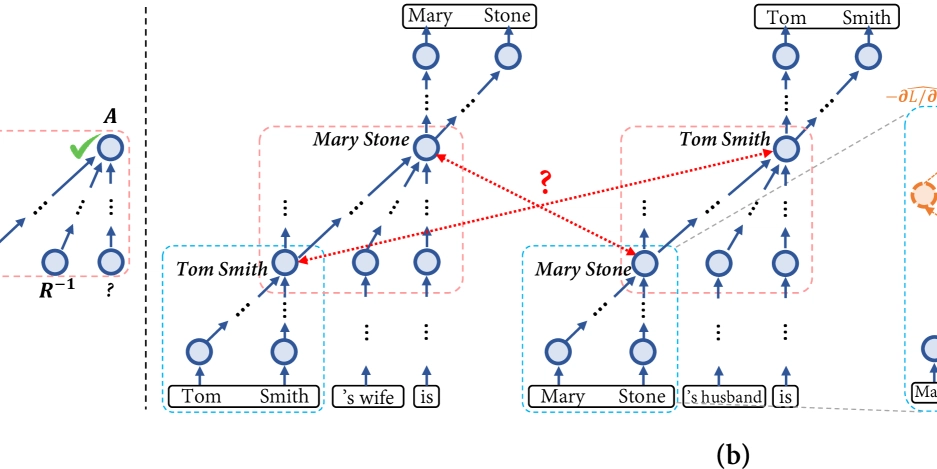

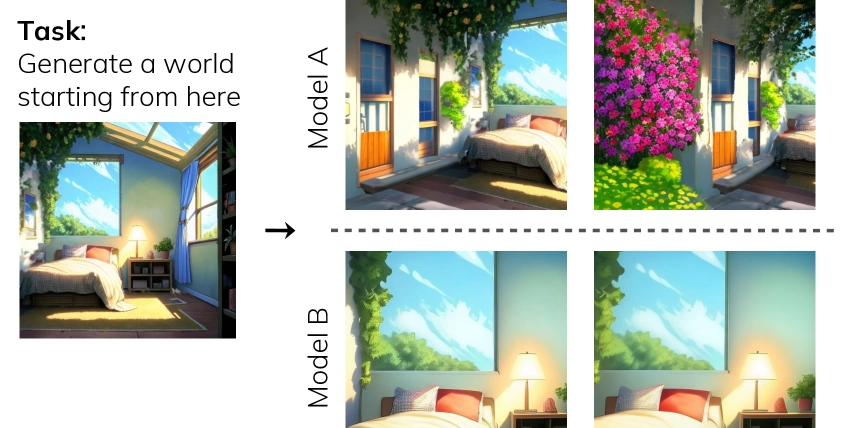
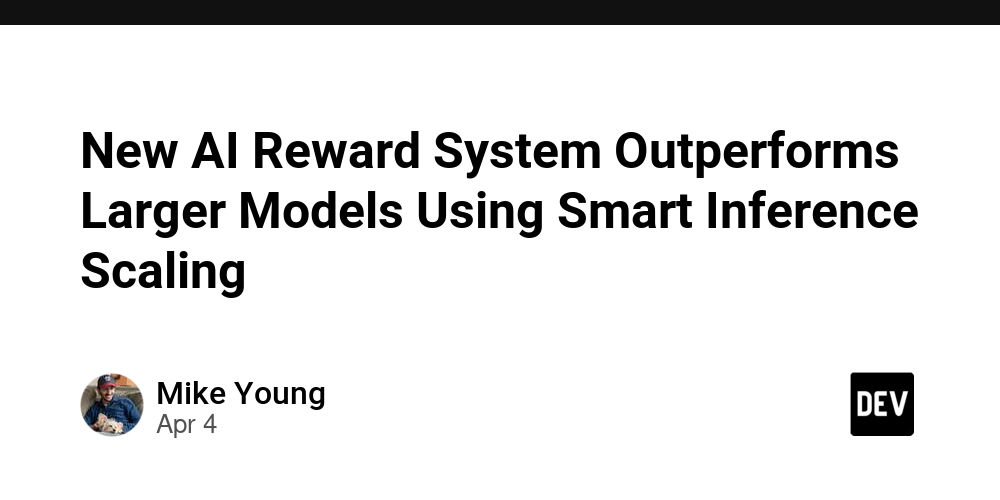


























































































































.jpg?#)















































































































































![YouTube Announces New Creation Tools for Shorts [Video]](https://www.iclarified.com/images/news/96923/96923/96923-640.jpg)

![Apple Faces New Tariffs but Has Options to Soften the Blow [Kuo]](https://www.iclarified.com/images/news/96921/96921/96921-640.jpg)




























































































































